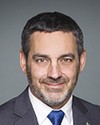Thank you very much, Mr. Aubin.
Thank you, Madam Chair.
Thank you to the witnesses.
Ms. Domingue, I find your presence here extremely valuable. I think you are the example that best illustrates the angle of the coexistence of airports, and flying schools in particular, with a densely populated area. I would like to point out that beyond the six short minutes I have to talk to you, I hope that everyone around the table will listen to your point of view. The NDP had proposed an amendment that stated that a bill should include a study on the public health consequences of noise pollution and demonstrate greater transparency in the distribution of data collected on the issue, as you mentioned earlier. Unfortunately, this amendment was rejected.
To this end, I would like to tell people around the table that Ms. Domingue is a marathon runner when it comes to representing the rights of riverside communities.
Honestly, this is the most obvious case in Canada of mismanagement regarding the establishment of flying schools in a densely populated area. Obviously, Ms. Domingue, you have been faced with poor management of the situation. I will soon give you the floor, but first I would like to remind you of something important. Too many people say that the people of Saint-Hubert knew very well that they were moving close to an airport. I always remind them that Saint-Hubert Airport, located in a very small suburb of Montreal, is the sixth busiest airport in Canada, after Toronto Pearson International Airport, Dorval Airport, probably Edmonton International Airport, Vancouver International Airport and another one that I forget. This is no joke.
Your testimony perfectly illustrates that, if we don't take this into account in advance when planning the arrival of a flying school, we end up with citizens without resources. You fought, you did everything you could to get corrective action. Is the situation better today or is it clearly not?

